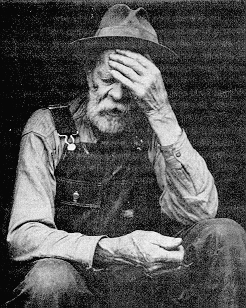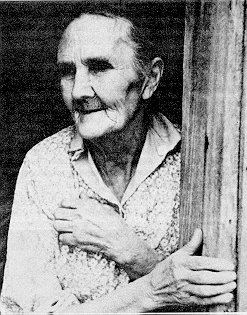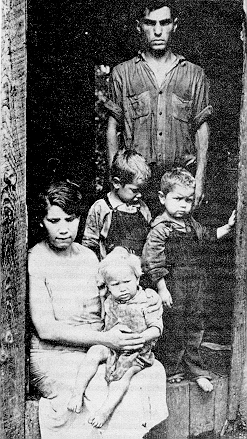I find your comment that Social Security is a wasteful program curious. In your mind what happens to people if there is no Social Security? Do you realize that when they established Social Security in the 1930s millions of older women and men and disabled were living in abject poverty and it pulled them out of abject poverty and allow them to live a life of dignity and much less misery. It was hard for women in those days to even get good work. Even today Social Security helps mostly women.
People are not good at planning for their future, so forced savings account by society, saves so many people. Without it we would go back to people living in abject poverty. It would be horrible. Around 50% of the people over 65 live almost entirely on their Social Security and have very little savings. People just have a hard time planning for retirement on their own. That is just the fact.
And Social Security is actually in pretty good shape, And If They Would Just Raise the cap so that the rich paid more into it, it would be good for another 75 years. We will be lucky if the human species last another 75 years-lol. But that certainly gives us enough time to figure whatever else out we need to do. By that time robots will be producing almost everything anyway and then we'll have to engage in some sort of massive wealth redistribution anyway. But that's another story.
I don't understand people that think we can do without Social Security. A society with millions of people living in abject poverty is a terrible thing and not only terrible for the people, but it weakens the society as a whole. And as often as not the children also end up living in abject poverty and that is horrible.
I read you agree with universal healthcare, and I certainly agree with that. Personally, I am in good shape as I have both a state retirement program (which I planned) and Medicare. But I have an awful lot of friends walking around crippled because they don't have adequate health insurance and can't get the medical help they need. I know you're sympathetic to that.
I have had a hip replacement because I struggle with arthritis. And that changed my life. I don't even know I have it, I was also surprised at how many people my age have hip and knee problems that could be fixed by replacements.
ssa.gov
" I am a dove on foreign policy and
believe social security and other wasteful programs should be eliminated. Those who have already paid money into Social Security and are under 50, should be offered a buy out by the Government.>>
Fifty Years of Social Security
by Martha A. McSteen
Acting Commissioner of Social Security
The author wishes to acknowledge the assistance provided by the following members of the Social Security Administration's Office of Legislative and Regulatory Policy: Peggy S. Fisher, Director, and Timothy K. Evans, and Richard L. Griffiths, staff, of the Division of Retirement and Survivors Benefits.
Today, we celebrate the 50th anniversary of the Federal social insurance program, now known simply as "Social Security," that emerged in 1935 as part of the Nation's response to the plight of its elderly. The Social Security program of the 1980's is the direct descendent of the limited program of contributory old-age benefits enacted in 1935. The program, which today covers virtually all jobs, continues to have certain basic characteristics found in the original program; that is, eligibility is earned through work in covered jobs, participation is generally compulsory, the amount of the benefits is related to covered earnings, the program is intended to provide a base of protection, and benefits are financed primarily through dedicated payroll taxes paid by workers and their employers.
Yet, while the program fundamentals have remained the same over 5 decades, much has changed. As American work and life patterns have changed, so too Social Security has been adapted to meet current expectations. The legislative history of the program, described briefly below, shows clearly how Social Security has retained its essential characteristics as it has evolved to keep pace with the times.
Foundations of Change
By the end of the First World War, a primarily agrarian American society had become a primarily urban, industrialized one. Thus, on the eve of the Great Depression of the 1930's, a larger proportion of the American people were dependent on cash wages for their support than ever before. By 1932, however, unemployment reached 34 percent of the nonagricultural workforce. Between 1929 and 1932, national income dropped by 43 percent, per capita income by 19 percent. By the mid-1930's, the lifetime savings of millions of people had been wiped out.
For vast numbers of aged people, and people nearing old age, the loss of their savings brought with it the prospect of living their remaining years in destitution. At the height of the Depression, many old people were literally penniless. One-third to one-half of the aged were dependent on family or friends for support. The poor houses and other relief agencies that existed at the time to assist people who had fallen on hard times were financed mainly from charity and local funds. They could not begin--either financially or conceptually--to respond adequately to the special needs of the aged brought about by the cataclysmic events of the Depression.

| 
| Before Social Security, many people faced destitution in old age
|
Although by 1934, 30 States had responded by providing pensions for the needy aged, total expenditures for State programs for the aged that year were $31 million--an average of $19.74 a month per aged person. As the Depression worsened, benefits to individuals were cut further to enable States to spread available funds among as many people as possible.
Various national schemes to provide income to the aged received substantial attention. These included the Townsend Old-Age Revolving Pension Plan and a plan called "Share the Wealth" advanced by Louisiana Senator Huey P. Long.
Under the Townsend plan, every American over age 60 was to get a monthly pension, provided he or she did not work and promised to spend the entire payment during the month. Under Long's plan, large personal fortunes would be liquidated to finance (1) pensions for the aged and (2) cash payments to every family sufficient to buy a home, a car, and radio.
Due in large part to the public and congressional pressures for some Federal response to the chaotic conditions of the time, in June 1934, a Committee on Economic Security was established by Executive Order of President Franklin Roosevelt. This Cabinet-level Committee, chaired by Frances Perkins, the Secretary of Labor, was given the task of developing constructive, long-term proposals for the prevention of all the major causes of economic insecurity. Given the desperate conditions of the time, the Committee's major attention was focused on programs to protect the unemployed. Yet, amid some controversy about the feasibility and constitutionality of such a plan, there developed from the work of the Committee a proposal for compulsory, contributory old-age insurance, which was ultimately enacted as part of the Social Security Act.
The Social Security Act, enacted on August 14, 1935, provided a new federally administered system of social insurance for the aged financed through payroll taxes paid by employees and their employers. Under the system, which applied only to workers in commerce and industry, people would earn retirement benefit eligibility as they worked. With some exceptions, benefits would be related to workers' average covered earnings, and workers could not have earnings and still be eligible for benefits. No benefits were provided for spouses or children, and lump-sum refunds were provided to the estates of workers who died before age 65 or before receiving at least the equivalent in benefits of their taxes plus interest. Collection of payroll taxes began in 1937, and benefit payments were scheduled to begin in 1942.
The Early Years
Even as the Social Security legislation moved through the Congress in the late winter and spring of 1935, it was acknowledged by many supporters that the old-age program then under consideration was but a first step in providing comprehensive protection for American workers against loss of earnings. President Roosevelt, in signing the Social Security Bill into law noted that "This law, too, represents a cornerstone in a structure which is being built but is by no means complete." In May 1937 the month in which the old-age program survived a crucial constitutional test in the landmark Helvering v. Davis case (in which the employer Social Security payroll tax was found constitutional), the Senate Committee on Finance and the Social Security Board jointly appointed an Advisory Council on Social Security. This outside advisory group, which would be the first of many to study and make recommendations concerning Social Security over the years,* was instructed to study possible ways of making the program more fully effective sooner than contemplated under the 1935 law.
(* Appointment of outside advisory bodies has long been institutionalized as a tradition in Social Security policymaking. Numerous advisory bodies have met over the years, and most of the changes made in Social Security have been based in large part on their studies and recommendations. The law has since 1956 required periodic appointment of Advisory Councils.)
The Council's fundamental finding was an endorsement of contributory old-age insurance as a way of preventing dependency in old age and thereby reducing reliance on needs-tested assistance. Further, the Council recommended a benefit structure that, in addition to basic benefits for workers, would provide protection for aged wives, widows, and surviving children starting in 1940.
Based on the Advisory Council's recommendations and recognizing the heavy dependence of most families on the male wage earner at that time, the Congress, in 1939, enacted legislation that eliminated lump-sum payroll tax refunds and provided benefits for aged wives and widows, young children of retired and deceased workers, young widows caring for a child beneficiary, and dependent parents of retired and deceased workers.
 | | Unemployment affected many families during the Great Depression of the 1930s |
The Committee on Ways and Means of the House of Representatives and the Senate Committee on Finance, in their reports on the 1939 amendments, reasoned that "Under a social-insurance plan the primary purpose is to pay benefits in accordance with the probable needs of the beneficiaries rather than to make payments to the estate of a deceased person regardless of whether or not he leaves dependents."
The 1939 legislation also provided a new method of computing benefits, based on average monthly earnings instead of on cumulative wages. The net effect of the 1939 amendments was to increase the annual cost of benefits payable during the early years and to decrease the annual cost of benefits payable during later years. Over the long range, the average annual cost of benefits remained about the same as under prior law.
In addition to these changes in benefits, the 1939 amendments made basic changes in the financing of the Social Security program by establishing the Old-Age and Survivors Insurance Trust Fund and by changing the size of the financial reserves held by the program. The provisions of prior law would have resulted in the accumulation of a huge reserve fund over the years, similar to the reserves built up by private pension plans. The new legislation was designed to constrain the accumulation of reserves and, in effect, to move the financing of the program toward "pay-as-you-go" financing. This change in the reserve concept allowed the immediate payment of benefits to retired workers and to their dependents and survivors without increasing Social Security tax rates. This change in financing also permitted a 3-year postponement of the increases in the Social Security tax rate that had been scheduled for 1940.
Other recommendations of the 1938 Council that were enacted in 1939 included:
- Provision for benefits to start in 1940 instead of 1942;
- Revision of the earnings test, allowing earnings of $14.99 a month before benefits were withheld; and
- A method of measuring whether an individual had worked long enough in covered employment to get a benefit--based on "quarters of coverage" the measure on which today's methods are based.
Following implementation of the 1939 amendments, the basic Social Security program was in place. It would remain essentially unchanged over the 1940's as the Nation concentrated its efforts on fighting World War II and toward building a healthy post-war economy. Social Security legislation enacted during these years included further postponement of tax rate increases, minor changes in coverage, and provision for coordinating the survivor benefits payable under the Social Security and Railroad Retirement Acts. Nevertheless, Social Security grew in importance both to the aged and to the economy. The number of beneficiaries grew from about 222,000 at the end of 1940 to over 3 million in 1949. Average monthly benefits grew only slightly, however--from $22.60 for a retired worker in 1940 to $26 at the end of the decade-- less than the rate of inflation.

| The Advisory Council on Social Security, 1937-1938
|
The Post-War Era By the end of the immediate post-war period, Social Security had arrived at a major crossroads.
- The purchasing power of benefits
|








